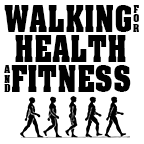As we age, staying active becomes a necessity for maintaining health, independence, and quality of life. Yet, many older adults struggle to keep moving, especially when managing chronic conditions.
According to the CDC, among adults aged 50–64 with at least one chronic disease, 30.9% are physically inactive compared to just 18.1% of their healthier peers. The trend continues across age groups: 29.6% versus 19.2% for those aged 65–74, and 37.3% versus 26.8% for individuals 75 and older.
This inactivity comes with a heavy price. Non-institutionalized adults aged 50 or older spend a substantial $860 billion annually on health care. Alarmingly, 4 in 5 of the most expensive chronic conditions in this age group are preventable or manageable through regular physical activity.
Something as simple and accessible as a daily walk can offer profound health benefits, making it a crucial habit for aging well.
The Physical Benefits of Walking for Older Adults
The physical benefits of walking are many. For older adults, they include:
Cardiovascular Health Enhancement
Walking plays a crucial role in maintaining heart health, especially for older adults who are at higher risk for cardiovascular disease. It reduces bad cholesterol, lowers blood pressure, and strengthens your heart.
According to Medical News Today, a study analyzed data from over 20,000 people across the U.S. and 42 other countries. It found that walking between 6,000 and 9,000 steps daily significantly lowers the risk of heart disease in older adults. Each additional 1,000 steps, particularly for those walking fewer than 3,000, further reduces risk.
Bone Health and Fall Prevention
As we age, bone health and fall prevention become paramount. A recent report highlights a concerning trend: the rate of fatal falls among adults aged 65 and older rose sharply between 2003 and 2023. In 2023 alone, more than 41,000 Americans of retirement age lost their lives due to unintentional falls.
Walking serves as an effective countermeasure. Being a weight-bearing activity, it promotes bone growth and helps preserve bone density, greatly lowering the chances of osteoporosis and fractures. This gentle impact signals bones to continually rebuild. Furthermore, regular walking improves balance, coordination, and leg strength, all critical in preventing debilitating falls.
Joint Health and Mobility Maintenance
Contrary to popular belief, walking doesn’t wear out joints; it helps protect and preserve them. Gentle, consistent movement lubricates joints, reduces stiffness, and maintains flexibility. For older adults with arthritis or joint pain, walking can ease discomfort and improve mobility.
According to CNN, an expert describes the body as an adaptation machine. When it is challenged, it adjusts positively, but without regular stress or activity, it adapts in less beneficial ways. Walking places healthy stress on bones, tendons, ligaments, and muscles, helping to combat osteoporosis and muscle loss.
Mental Health and Cognitive Benefits
Exercise offers a wide range of mental health benefits, including:
Mood Enhancement and Depression Prevention
Daily walks are a powerful antidote to mental health challenges often faced by older adults, such as depression linked to life changes or isolation. Walking triggers endorphin release, naturally elevating mood.
As WebMD notes, exercise effectively treats mild to moderate depression by boosting mood-enhancing hormones and self-confidence. Outdoor walks offer added benefits: sunlight exposure regulates circadian rhythms and provides Vitamin D, crucial for mental well-being and depression prevention.
Being in nature further reduces stress hormones and promotes calm. While some cases may require medication and therapy, often, increased activity like walking is a vital step toward feeling better.
Cognitive Protection and Brain Health
Regular walking increases blood flow to the brain, delivering oxygen and nutrients essential for optimal brain function. Research indicates that older adults who walk regularly have larger brain volumes in areas associated with memory and executive function.
Walking has been shown to reduce the risk of dementia and Alzheimer's disease. The combination of physical activity, social interaction (when walking with others), and environmental stimulation creates a powerful cocktail for brain health maintenance.
Getting Started With Exercise
For many older adults, beginning a walking routine can be difficult, especially when managing chronic conditions, joint pain, or fatigue. Consulting a healthcare provider who specializes in geriatric care is a smart first step. These professionals can assess individual health needs and recommend safe, effective strategies to stay active.
After an initial consultation, older adults can stay connected with an Adult-Gerontology Acute Care Nurse Practitioner (AGACNP) for ongoing support. These specialists monitor progress, adjust activity plans, and help ensure long-term success.
For those passionate about this field, AGACNP programs offer comprehensive training. Many pursue AGACNP online programs for added convenience, allowing flexibility while gaining crucial skills.
According to Baylor University, the combination of hands-on learning and real-world application prepares students for future roles in acute care. Many even secure job offers from their placement sites upon graduation, making it a practical and impactful career path.
Frequently Asked Questions
Which time is best for walking?
The best time for walking depends on personal preference and schedule, but morning walks offer fresh air and help boost energy for the day. Evening walks can aid digestion and reduce stress. Ultimately, the best time is when you can walk consistently and feel most comfortable.
Is it safe to walk if I have chronic health conditions like arthritis or heart disease?
Walking is generally safe for most chronic conditions, but always consult your healthcare provider before starting any exercise program. They'll offer personalized guidance on the right intensity, duration, and necessary precautions for your specific health needs. Many chronic conditions actually improve with regular walking when done appropriately.
What should I do if I experience pain or discomfort while walking?
Mild muscle soreness is normal when starting a new exercise routine. However, sharp pain, chest pain, severe shortness of breath, or dizziness should prompt immediate medical attention. Start slowly, use proper footwear, warm up before walking, and stop if you experience any symptoms. If pain persists, consult your healthcare provider to rule out underlying issues and receive guidance on safe exercise modifications.
Daily walks become increasingly vital as we age, offering a comprehensive approach to maintaining physical health, mental well-being, and independence. From strengthening bones and preventing falls to protecting cognitive function and enhancing mood, walking provides benefits that compound over time.
The key is consistency rather than intensity. A daily 20-30 minute walk can add years to your life and life to your years. As we age, we often cannot control all aspects of our health, but we can control whether we take that daily walk. It's a simple decision with profound implications for how we age and the quality of life we maintain throughout our later years.





